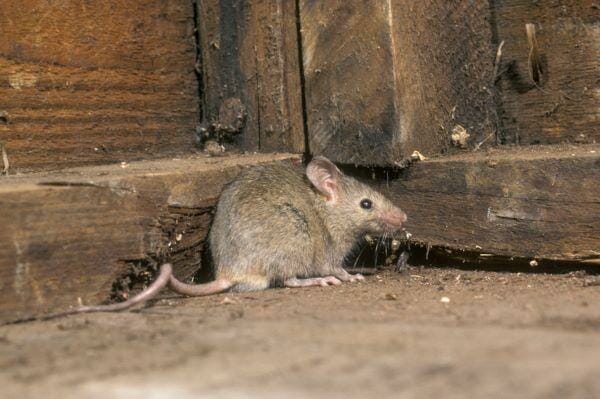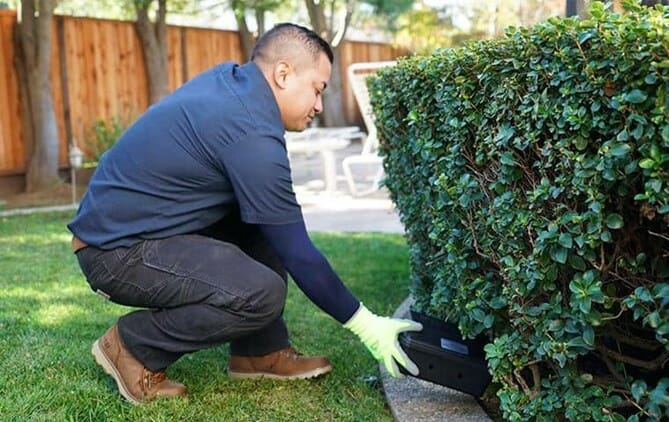How To Get Mice Out of Your Home
How To Get Rid of Mice
Mice are tiny creatures that can be cute in children’s stories, but in real life, they can be a nuisance, and they can create a lot of problems in your home. Mice are known to damage property, spread diseases, and contaminate food. Therefore, it’s important to get rid of them as soon as possible.
What Do Mice Look Like?
Mice are small rodents that belong to the order Rodentia. They have a pointed nose, a furry round body, large ears and a long, often hairless, tail. Mice come in a wide variety of colors and sizes. Some common mice colors are white, brown and gray. Some are very tiny and others are around the size of a baked potato. Mice can be found in almost every part of the world, except for Antarctica. They are adaptable and can live in many different habitats, such as forests, grasslands, deserts and human dwellings. Mice are omnivorous and eat a range of foods, such as seeds, fruits, insects and even other mice. Mice are also social animals that communicate with each other using sounds, smells and body language.What Do Mice Eat?
Mice are omnivorous animals that eat a variety of foods, depending on what is available in their environment. They typically feed on seeds, grains, nuts, fruits, vegetables, insects, worms, and sometimes even other small animals. Mice have a high metabolism and need to eat frequently to survive. They usually forage at night and store food in their nests or burrows for later use. Mice can also adapt to human habitats and eat human food scraps, pet food, garbage, and anything else they can find.What Attracts Mice To My Home?
 Mice are small rodents that can easily enter your home through cracks, holes, or gaps. They are attracted by food sources, warmth, shelter, and nesting materials. Some of the common things that attract mice to your home are:– Pet food: Mice love to feed on pet food that is left out or stored in accessible containers. You should always keep pet food in sealed containers and clean up any spills or leftovers.
– Garbage: Mice can smell garbage from a distance and will try to access it for food. You should keep your garbage cans tightly closed and dispose of them regularly.
– Clutter: Mice like to hide and nest in cluttered areas, such as piles of clothes, boxes, papers, or furniture. You should reduce clutter and store items in plastic bins or bags.
– Plants: Mice can eat seeds, nuts, fruits, and vegetables from your plants. They can also use plants as cover or nesting materials. You should trim your plants and remove any fallen fruits or nuts from the ground.
– Water: Mice need water to survive and will look for sources of water in your home. They can drink from leaky pipes, faucets, toilets, sinks, or bowls. You should fix any leaks and keep water sources dry.
Mice are small rodents that can easily enter your home through cracks, holes, or gaps. They are attracted by food sources, warmth, shelter, and nesting materials. Some of the common things that attract mice to your home are:– Pet food: Mice love to feed on pet food that is left out or stored in accessible containers. You should always keep pet food in sealed containers and clean up any spills or leftovers.
– Garbage: Mice can smell garbage from a distance and will try to access it for food. You should keep your garbage cans tightly closed and dispose of them regularly.
– Clutter: Mice like to hide and nest in cluttered areas, such as piles of clothes, boxes, papers, or furniture. You should reduce clutter and store items in plastic bins or bags.
– Plants: Mice can eat seeds, nuts, fruits, and vegetables from your plants. They can also use plants as cover or nesting materials. You should trim your plants and remove any fallen fruits or nuts from the ground.
– Water: Mice need water to survive and will look for sources of water in your home. They can drink from leaky pipes, faucets, toilets, sinks, or bowls. You should fix any leaks and keep water sources dry.How Do I Know If I Have A Mouse Infestation?
Mice can be sneaky creatures, and it’s not always easy to tell if you have a mouse infestation in your home. However, there are a few signs you can look out for to determine if you have a mouse problem.- Droppings
- Gnawing and Scratching Sounds
- Nests
- Grease Marks
- Footprints
Ways To Get Rid of Mice Naturally And Humanely
If you have a mouse infestation in your home, it is possible to eliminate the animals without killing them. Here are a few humane, yet effective tips:Mice infestations can be a problem for many homeowners, but not everyone wants to use toxic chemicals or cruel methods to get rid of them. Fortunately, there are several natural and humane ways to get rid of mice.
Here are a few humane, yet effective tips:Mice infestations can be a problem for many homeowners, but not everyone wants to use toxic chemicals or cruel methods to get rid of them. Fortunately, there are several natural and humane ways to get rid of mice.- Peppermint Oil
- Steel Wool
- Ultrasonic Repellents
- Humane Traps
- Keep Your Home Clean
Conventional Methods To Get Rid Of Mice
If natural and humane methods aren’t effective in getting rid of a mouse infestation, there are conventional methods that can be used. These methods may involve the use of chemical-based products or lethal traps, so it’s important to take appropriate safety precautions and use them carefully.
- Snap Traps
- Glue Traps
- Rodenticides
- Ultrasonic Devices
- Professional Extermination
How Do Exterminators Get Rid Of Mice?
 Exterminators use a variety of methods to get rid of mice, depending on the severity of the infestation and the specific circumstances of each case. Here are some of the methods that exterminators commonly use to eliminate mouse infestations:
Exterminators use a variety of methods to get rid of mice, depending on the severity of the infestation and the specific circumstances of each case. Here are some of the methods that exterminators commonly use to eliminate mouse infestations:- Inspection: The first step in any extermination process is to thoroughly inspect the affected area to determine the severity of the infestation and identify potential entry points.
- Traps: Exterminators may use a variety of traps to catch and eliminate mice. These can include snap traps, glue traps, and live traps.
- Rodenticides: Exterminators may use rodenticides, which are toxic baits that mice eat and die from. Rodenticides come in various forms, including pellets, blocks, and liquid formulations.
- Sealing entry points: Exterminators may seal off entry points to prevent mice from getting into the affected area. This may involve sealing cracks and holes in walls, floors, and foundations with materials such as steel wool or caulk.
- Sanitation: Exterminators may recommend specific sanitation practices to eliminate food sources for mice, such as cleaning up spills and crumbs, storing food in airtight containers, and taking out the trash regularly.
- Exclusion: Exterminators may also recommend exclusion techniques to prevent future infestations. This can involve making structural modifications to the building or sealing off entry points with materials such as metal flashing.